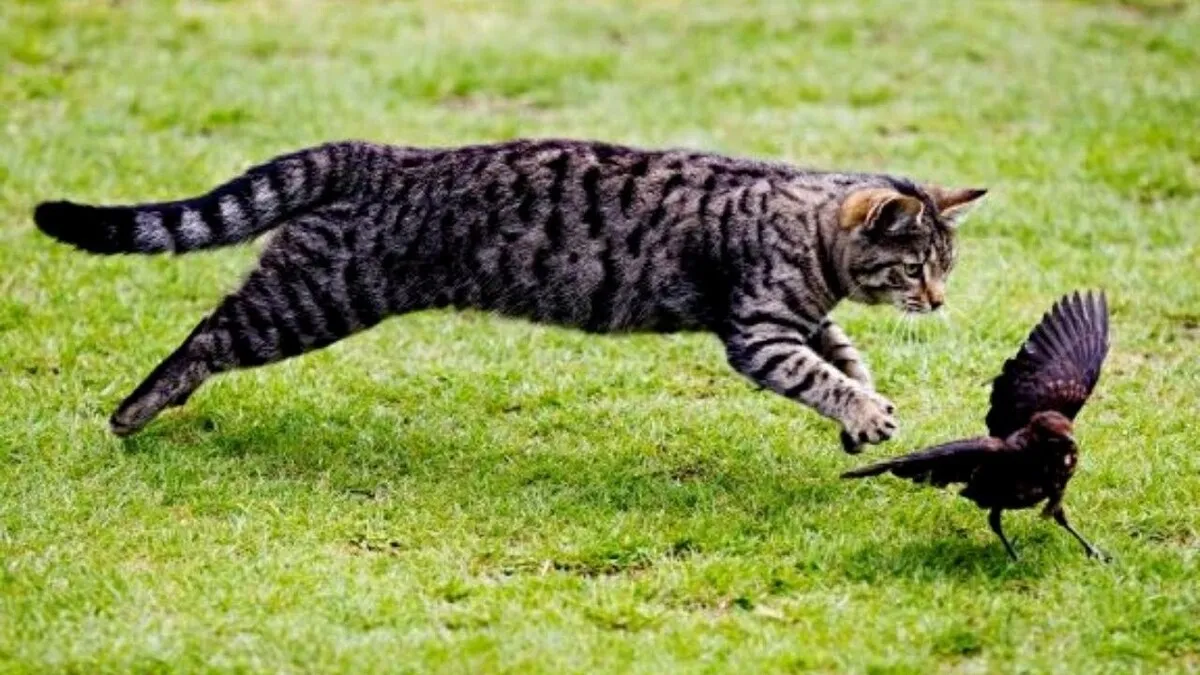Bird Flu Is Now Killing Cats at 90% Fatality Rate

Spring is here, birds are on the move, and a new threat is spreading alongside them: bird flu (H5N1). This virus is changing fast and could be on the path to becoming a human pandemic. Scientists from the University of Maryland School of Public Health have recently published a major study in Open Forum Infectious Diseases highlighting a surprising new concern. They found that cats are catching bird flu more often, and they’re calling for urgent monitoring to help stop the virus before it can spread between people.
“The virus has evolved, and the way that it jumps between species – from birds to cats, and now between cows and cats, cats and humans – is very concerning. As summer approaches, we are anticipating cases on farms and in the wild to rise again,” says lead and senior author Dr. Kristen Coleman, assistant professor in UMD School of Public Health’s Department of Global, Environmental and Occupational Health and affiliate professor in UMD’s Department of Veterinary Medicine.
“Bird flu is very deadly to cats, and we urgently need to figure out how widespread the virus is in cat populations to better assess spillover risk to humans,” she said. “We want to help protect both people and pets.”
Looking at data from 2004 to 2024, researchers uncovered 607 cases of bird flu in cats around the world, including 302 deaths. These cases spanned 18 countries and involved 12 different types of cats, from household pets to big cats like tigers. Despite the growing threat, cats are not routinely tested for bird flu. In most cases, testing only happens after the animal has died. Because of this limited surveillance, the real number of infections is likely much higher, according to lead researcher Dr. Kristen Coleman.
Yet the ways cats are getting bird flu are multiplying. The study shows cats contract bird flu directly by eating infected birds or contaminated raw chicken feed, and indirectly through other mammals – for example, farm cats fed raw milk from infected cows, pet cats to other pet cats, tigers to other tigers.
Infected cats often suffer from acute encephalitis (brain swelling) and other severe symptoms, which are mistaken for rabies, according to the study. The most deadly strain of bird flu is highly infectious and makes up the majority of cases in domestic cats, with a current 90% case fatality rate.
In humans, bird flu is slightly less deadly, but still has killed around half of the 950 people infected with it globally. Between April 28, 2022 (when cumulative data on humans in the U.S. started being collected) and January 6, 2025, the United States has seen 66 confirmed cases in humans and one death.
Coleman and her team are particularly concerned about the potential for bird flu getting into animal shelters which could result in large outbreaks, potentially involving humans – similar or worse to what happened in New York City with a different strain of bird flu in 2016.
There are no reported cases of human-to-human transmission of bird flu, but researchers are concerned that as the virus spreads and evolves, it could become easily transmissible through the air.
“Our future research will involve studies to determine the prevalence of HPAI and other influenza viruses in high-risk cat populations such as dairy barn cats. Our research seeks to protect people and our vulnerable pet cats from the emerging threat of H5N1,” said Ian Gill Bemis, coauthor of the paper and doctoral student studying bird flu in cats.
4155/v





















